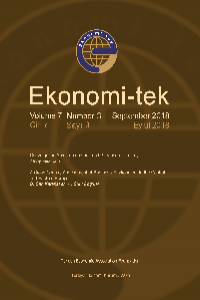Gender Discrimination in Non-Insured Employment Pension Plans: The Impact of EU Directives
gender discrimination, pension plans, funded pensions, actuarial repercussions of gender biometric behavior, EU laws
Gender Discrimination in Non-Insured Employment Pension Plans: The Impact of EU Directives
gender discrimination, pension plans, funded pensions, actuarial repercussions of gender biometric behavior, EU laws,
___
- Eylenbosch, A., (1996), “Equal Treatment for Men and Women in Complementary Pensions: Answers or Unresolved Questions?”, Journal of European Social Policy, Vol. 6. Nº2, pp. 123-146.
- González-Rabanal, Miryam de la Concepción and Luis Mª Sáez de Jáuregui Sanz, (2006) La Política Comunitaria Contra la Discriminación de Género: Una Propuesta de Evaluación de Su Coste en los Planes y Fondos de Pensiones de Empleo. Su Aplicación al Caso Español. Madrid, IEF.
- Luckmans, L., (1997), “Equal Pension Rights for Men and Women: A Realistic Perspective”, Journal of European Social Policy, Vol. 7, Nº 2, pp. 237-253.
- Marier, P., (2007), “Affirming, Transforming or Neglecting Gender? Conceptualizing Gender in the Pension Reform Process,” Social Politics: International Studies in Gender, State and Society, 14(2), pp. 182-211.
- Woodward, A.E., (2008), “Too Late for Gender Mainstreaming?”. Taking Stock in Brussels,”Journal of European Social Policy, Vol. 18, Nº 3, pp. 289-302.
- ISSN: 2146-6173
- Yayın Aralığı: Yılda 3 Sayı
- Başlangıç: 2012
- Yayıncı: Türkiye Ekonomi Kurumu Vakfı
The Golden Rule of Public Finance: A Panacea?
Mustafa İSMİHAN, F. Gülçin ÖZKAN
Türkiye Ekonomisi İçin Beşeri Sermaye ve Bilgi Sermayesi Birikimine Dayalı Bir İçsel Büyüme Modeli
Gender Discrimination in Non-Insured Employment Pension Plans: The Impact of EU Directives
Miryam De La Concepción GONZÁLEZ-RABANAL, Luis Mª Sáez De Jáuregui Sanz SANZ
